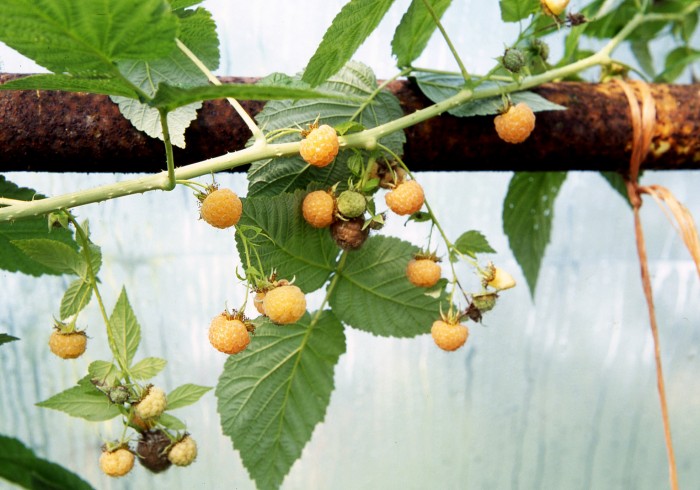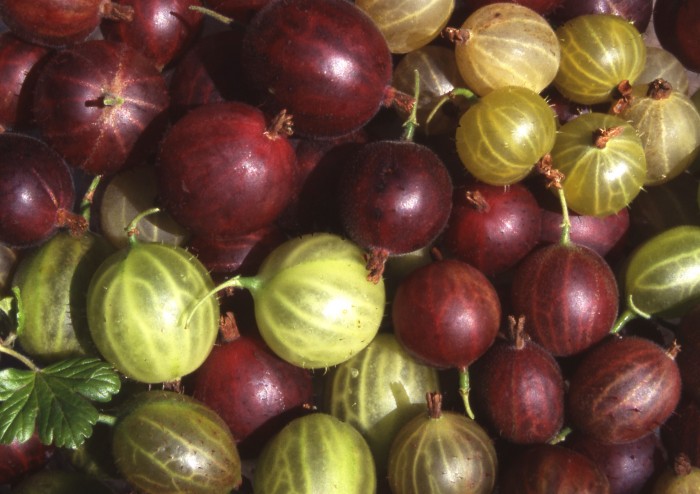You need only an unheated greenhouse to enjoy these delicious health giving fruits weeks even months earlier than the outdoor crops. This is when they are most appreciated, and most expensive in the shops. Just bringing these under cover is sufficient incentive for them to leap into growth and then flower and fruit with little trouble. The greenhouse keeps off the harshest weather and provides background warmth but must have plenty of ventilation fully open whenever possible only closed down at night or when freezing. No heat is needed indeed too much would spoil the quality or worse, encourage red spider mite. A huge advantage is there’s rarely trouble from all the usual slugs, moulds and birds. So indoor crops are much more trouble free.
Strawberry plants can be bought or runners rooted. These should be young and not yet fruited and potted in rich compost in generous pots, the bigger the better. Kept outside till needed and well watered and fed they may try and flower prematurely, if so these and any runners should be removed. Bring batches under cover a fortnight apart from late winter and keep these up high and close to the glass. Water frequently, and feed regularly until the fruit sets. Hand pollination is seldom needed but best done anyway. And that’s it, compost the plants afterwards as they seldom do so well again as fresh ones.

We can do the same with raspberries. Again these can be bought in or surplus canes dug and potted. Raspberries also need a rich compost and can be set individually in modest pots or three or five in a small tub. If we are going to force a crop from these canes then throw them away not try and keep them going year after year then any new shoots from under the surface should be nipped off as they emerge. (Raspberry plants can be pruned and reused though like strawberries seldom do as well again as fresh plants.) The raspberry plants are kept outdoors well fed and watered till they drop their leaves and brought under cover like the strawberries in batches from late winter. Other than feeding and watering you just need pick the fruits! Any varieties are suitable though you may need trim the tallest down a bit. And there’s tasty yellow varieties as interesting alternatives.

The third delight are gooseberries, these are so much better when grown this way you’ll never want others and there are many little known very tasty gourmet ones to find. They can be bought as plants or cuttings rooted then potted up, in either case stronger plants of a year or two will crop the best. Their shoots should be shortened by half or so to reduce the number of berries and increase their size (and make them easier to pick). Thinning these fruits even more whilst they’re still tiny makes the rest swell bigger and sweeter. Gooseberries are forced just as with the other berries though after cropping these can be moved back outside and rejuvenated into giving fair crops again the next year.










